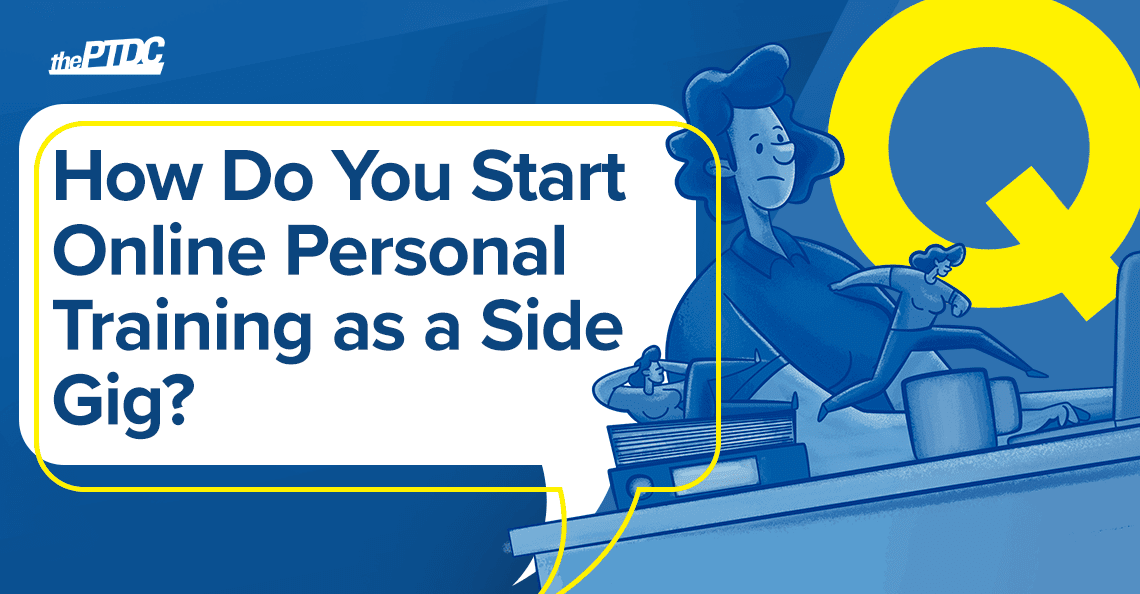 If you’re looking to start online personal training as a side gig, my guess is you’re working in a different industry now.
If you’re looking to start online personal training as a side gig, my guess is you’re working in a different industry now.
Maybe personal training wasn’t a job option when you first got into the workforce, or maybe you decided to pursue a more “normal” career.
You’ve always had a passion for health and fitness—and now, for whatever reason, you want to pursue it.
But you’re not ready to quit your full-time job just yet. You want to try it out as a side gig first.
The question is, how do you get started? Start by setting realistic goals. Don’t think you’re going to sign up dozens of clients and make hundreds of thousands of dollars doing this part-time. It’s a side gig. It’s a test.
The most important thing is to start low pressure. You don’t want to invest in any software. You don’t want to invest in anything, to be honest.
How to start online personal training as a side gig
You really only need to figure out three things:
-
- How clients will pay you.
- How you’ll deliver your program.
- How you’ll support your clients.
That’s it. And those three things won’t cost you anything.
So you’ll need to set up a PayPal or Venmo account, if you don’t have one already.
Then to deliver your program you can use an Excel spreadsheet or Google Docs—whatever you’re comfortable with. And for support, you can use text messaging, audio messaging, WhatsApp, Facebook Messenger, or your favorite form of social media.
Don’t think that to train people online you’ve got to adopt new technologies and take on additional expenses.
The most important thing is to just get going. And with this approach, your profit margin will be close to 100 percent.
How to get clients so you can start online personal training as a side gig
Start with your personal network. You can train friends and even family, if you want. Often people who know you, or knew you at some point in life, can become your best clients.
Introduce your business to your network by saying:
“I’m thinking of doing some fitness training on the side. As you know, it’s something I’ve always loved. What do you think? Who should I work with?”
By floating it as an idea rather than a sales pitch, you’ll start a conversation that will accomplish a couple of things:
1. It’ll help you refine your pitch.
You can actually take what people tell you—their words—and use it.
For example, you could say, “I’m thinking of coaching men who are similar to me—busy guys with full-time jobs and families who want to lose a few pounds. What do you think they need?”
You may hear back that the biggest challenge for those types of people is finding time to train, so short 20- or 30-minute workouts would be an ideal focus.
Or you could ask, “I’m thinking of coaching working moms. What do you think are their fitness priorities?” And you may learn that their lives are so complicated already, you need to keep things simple.
And you keep refining your pitch based on the answers you get.
2. It’ll allow you to pitch people—without actually pitching them.
If you go to someone and say, “Hey, I have this thing. Do you want to buy it?” it becomes a much harder conversation. But if you go to somebody and say, “Hey, can you help me develop this thing or this idea that I’m passionate about; I’d really value your opinion” you’ll have a more pleasant interaction.
So you not only get great feedback with this strategy, but you also get the opportunity to speak to people about something they otherwise might not be open to if you were trying to sell them on it.
You’ve made them part of your journey. They have some buy-in and ownership of what you’re doing.
This is called “permission marketing.” It’s when people are given a choice of opting in to receive promotional messages.
All this makes it easier in the end to say, “Hey, do you know anybody who might be interested in this?”
If they suggest someone, ask for their name or if they would mind making an introduction. If they’re interested themselves, say you’ll reserve their spot and ask for a $20 deposit.
And you’re on your way. Just keep it really simple.
Learn more: Get answers to more online trainer questions.











